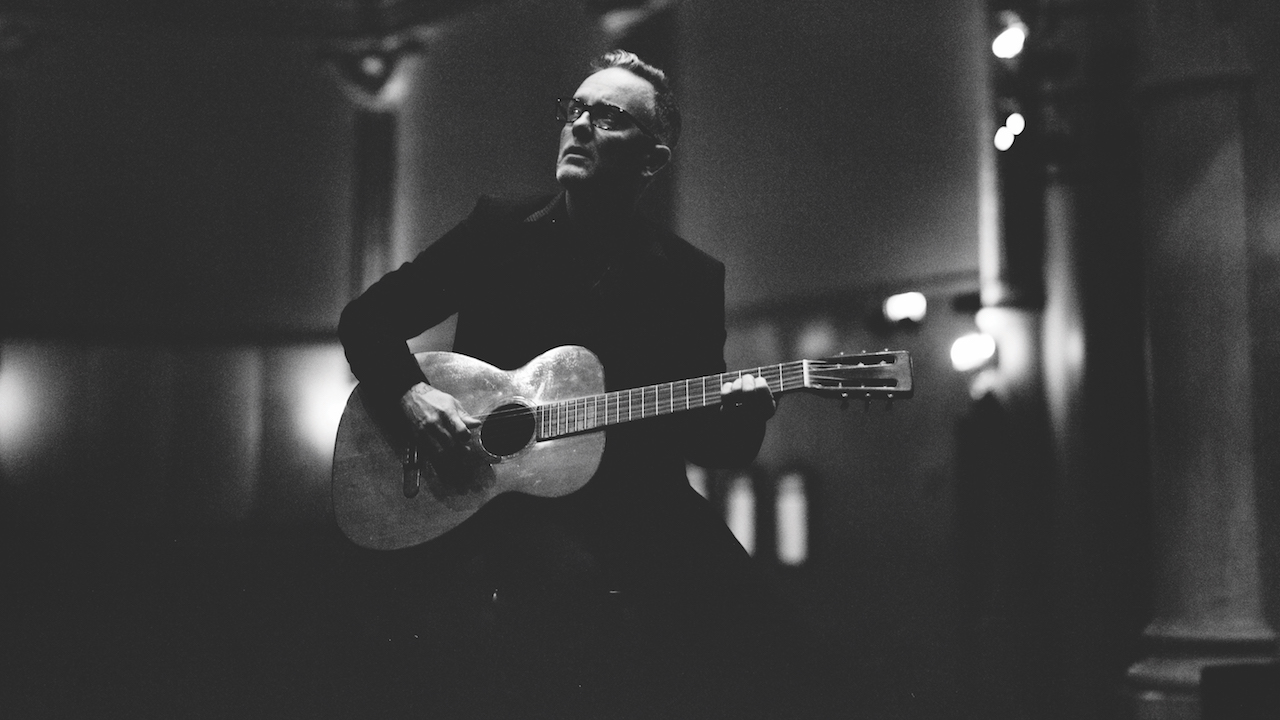“The weakness that guitar players often have is they’re good at noodling but not necessarily at making a hook that sticks to your ribs”: How heartland rocker Dave Hause made his new album Drive It Like It’s Stolen
We catch up with Dave Hause as he prepares to take the songs from his latest album on the road and talk parenthood, the benefits of stripped-down production and discover why Mike Campbell is his favourite guitarist

Singer-songwriter Dave Hause has had a guitar around his neck, professionally speaking, for two decades now, first as the frontman for acclaimed Philly punks the Loved Ones, and for the past dozen years as a solo act.
But when it comes to laying down guitar tracks, he’s as likely to perform them himself as call in a Nashville ringer like Tom Bukovac, Sadler Vaden or Kris Donegan, who guests on his sixth and latest album, Drive It Like It’s Stolen (Blood Harmony Records). “They can generate licks so much faster than I could,” Hause says. “It’s like each of these recording sessions has been a really expensive guitar lesson for me.”
Hause built, deconstructed and rebuilt the 10 songs on Drive It Like It’s Stolen on his Martin OM-21 and piano before hitting the studio with producer Will Hoge.
Written from the perspective of a father navigating post-millennium tension, ever-present global calamities and all the uncertainties that lay ahead, the record finds Hause testing the fortitude of his heartland-inspired songwriting by turning down the volume, similar in spirit to the quieter moments on Bruce Springsteen’s Born in the U.S.A. and Tunnel of Love.
“It wasn’t all just ‘ripping rock band,’ like you’ll hear at the end of ‘Pedal Down’ or ‘Cheap Seats,’ where the band comes in the very end as a finale,” Hause says, referring to songs from his album.
“We did more of a hybrid, where the live band felt like a fader on the board that we could turn up or turn down, and we could have other elements guide the song.”
With that said, he didn’t abandon the sonic blueprint that got him here. Songs like “Hazard Lights” and “Damn Personal” stomp as hard as anything on 2021’s Blood Harmony, a precursor of sorts to Drive It Live It’s Stolen that reveled in the optimistic glow of new parenthood.
All the latest guitar news, interviews, lessons, reviews, deals and more, direct to your inbox!
Strings, Mellotron and horns add to the emotional heft of Hause’s earnest songwriting, an expertise he mastered on 2017’s Bury Me in Philly and 2019’s Kick.
“As much as I love guitar,” he says, “I’m more of a student of them than a journeyman guitar player. I’m more focused on songs.”
We caught up with Hause as he began the process of adapting the songs and guitars from Drive It Like It’s Stolen for the stage.
The underlying anxiety of your previous work assumes a larger role on Drive It Like It’s Stolen. What kind of space were you in while writing the record?
I was in a pretty low spot. I was watching the world now with three-year-old kids. Blood Harmony contains a lot of excitement around family, a lot of falling in love with having a family.
This was more like going out into the world after all that and being like, Oh, did we unwittingly bring these innocent kids into a world that may not be able to sustain them? So I think you have a vibe shift. I was intent on honoring that with the production and the sounds.
You made some bold sonic and structural choices.
For Blood Harmony, we got incredible musicians into a room and made, essentially, a roots-sounding rock and roll record. I had at least one good idea with Drive It Like It’s Stolen, which was to try not to repeat that.
My ear was being pulled more by stuff that was happening in pop and hip-hop in terms of production. I wanted to push further into getting the sounds that are in my head, instead of putting limitations on things based on how we would play them live, or what I’m personally capable of as a musician. I just wanted to shoot for the moon.
Keys and strings take up more real estate here than on your past records. Did those songs originate on guitar?
Yeah, there’s always an early version with guitar. Even if I’m writing on piano and I put together a demo, I’ll do a more straightforward guitar-and-vocal version to make sure the song is sturdy. Oftentimes it’s like, Well, that just sounds like a folk song. But if there’s a folk song rendering that’s compelling, then I know all the other stuff should fall into place.
There’s continuity in your melodies, and also in how you tip your hat to other artists, like in “Cheap Seats” when you hit that “American Girl” chord before the full band comes crashing in.
I think that continuity has a lot to do with sensibility. I’m pretty forthcoming with my weaknesses as a guitar player. But I think the weakness that guitar players often have is they’re good at noodling or stuff that feels impressive, but not necessarily at making a hook that sticks to your ribs.
And that’s why Mike Campbell is my favorite guitar player. There’s not too much flash, but you’re always gonna sing his guitar line.
For me, it gets back to melody. As that process has unfolded on each album, I’m guiding that electric guitar player. I’m going, “Well, that’s a really cool lick, except if you repeat it over and over, it’s even better.’”
Sometimes that comes from me and sometimes it comes from the producer. You have to leave people enough room to be creative and really look at it as a collaboration. You have to respect their expertise, and then also have a guiding principle, which for me is typically melodic. It’s gotta be a melodic line, otherwise, it sounds like guitar playing instead of music.
What was your writing process?
On some level, I know what my default choices are, especially on electric guitar. On the demos, I would often come up with a song idea on an acoustic guitar or the piano, and then I would leave guitar out of the demo. I would just play bass. It made it more like an open slate for whoever was gonna come in — and sometimes that was me. Sometimes I would go back and record things once other elements had come in and I knew what I want to hear on the electric guitar.
Are you still a Les Paul Junior guy?
Yeah. I’ll probably have it till the day I die. It’ll go to my kids, and they’re gonna have to fight over it. That and my Nash Tele are my main two guitars live, and we’re always trying to find a way to put my Rickenbacker 12-string into the mix.
I’ve been more or less playing my Martin OM-21 Special for years now, but I’ve become pretty fascinated with [early ’40s Gibson] Banner guitars.
They’re obviously really expensive, but that’s the next really big breeze that’s blown into my guitar mind. I just love what those guitars are and how they’re tied to American history.
What amps do you gravitate toward these days?
I got interested in the Kemper a little bit after we toured with Bad Religion. A friend said, “Look, man, people aren’t coming to see you switch amps six times, because you’re playing rhythm guitar for the most part.
“Just make it sound great, and the way you do that is with your hand doing what it does through the best gear you have, which is that ‘65 Fender Deluxe Reverb and the ‘56 Junior or your Nash.” And it was really good advice. Those are my trusty tools.
Dave Hause‘s latest album Drive It Like It's Stolen is available to buy and stream now
Jim Beaugez has written about music for Rolling Stone, Smithsonian, Guitar World, Guitar Player and many other publications. He created My Life in Five Riffs, a multimedia documentary series for Guitar Player that traces contemporary artists back to their sources of inspiration, and previously spent a decade in the musical instruments industry.

